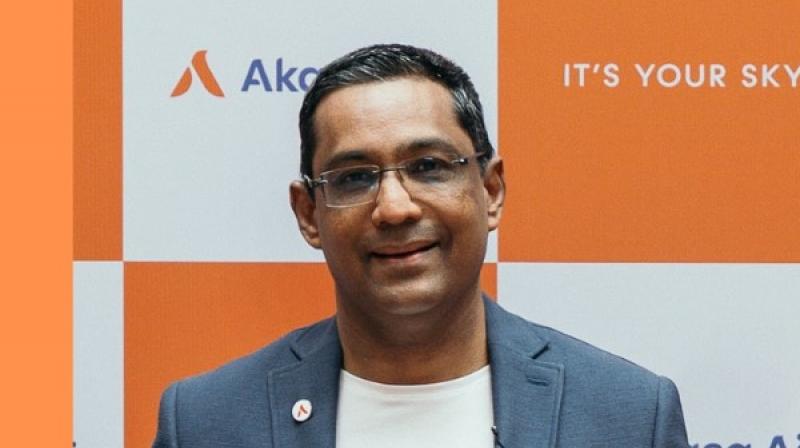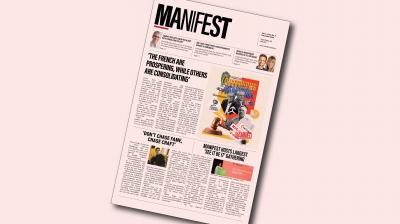In a move that blends utility with a touch of style, Akasa Air has partnered with adidas to launch SkyEaze, a new line of sneakers designed specifically for the airline’s cabin crew and ground staff.
Billed as a comfort-first initiative, the collaboration is the first of its kind in Indian aviation and adds a layer to Akasa’s employee-first approach.
Since its launch in 2022, Akasa has consistently positioned itself as a youthful, people-focused airline be it through its gender-neutral uniforms, onboard tech features, or pet-friendly policies. The SkyEaze sneakers are a continuation of that narrative, aimed at addressing the physical demands of aviation jobs that often go unnoticed.
The design is backed by function. The shoe features Cloudfoam sock liner tech that’s meant to ease pressure points and improve shock absorption which are practical features for long hours spent on aircraft and airport floors.
The brand has also rolled out a digital film to highlight this partnership.
As Akasa Air approaches its three-year milestone this August, the launch of SkyEaze also marks a timely reminder of the airline’s steady focus on building a distinct, employee-first culture in Indian aviation.
At the Mumbai launch event for SkyEaze, we caught up with Belson Coutinho, co-founder and COO, Akasa Air, to discuss the idea behind its adidas collaboration, what’s worked in their three-year marketing journey, the role of cross-brand collaborations, and how it all ties back to their evolving employee-first approach.
Edited excerpts:
Akasa has been around for three years now - what marketing and advertising efforts have worked for the brand to scale?
Our success lies in a strong and engaging media strategy - specifically, our approach to the press. We have maintained a transparent and proactive relationship with the media, which has been central to our brand’s outreach, engagement, and visibility. This is quite different from what I’ve observed in the past, where press relationships are often reserved for crisis management. For us, press media is a platform to share information openly and consistently, not just to control a narrative during tough times.
Our launch leaned heavily on press media, supported by a robust social media presence. It was a digital-only launch, and we smartly leveraged digital platforms to our advantage. With a presence across tier two and three cities as well as metros, we relied on data and analytics to guide our outreach. Since many of our target audiences were first-time flyers, we focused on creating awareness-led content to introduce them to a new airline.
This integrated approach - press media, digital platforms, data-driven insights, and social media - worked well for us. There was a natural curiosity around a new airline, but we also made sure our foundational elements were strong. From employee satisfaction initiatives to consumer offerings, we built meaningful stories around every touchpoint. It was this thoughtful use of modern platforms, combined with a clear internal strategy on how each channel would contribute to brand-building, that helped us connect with our audience effectively.
How do cross-industry collaborations like your current one with adidas enhance brand visibility? Also, will we foresee more partnerships in the future?
We’re super happy to have adidas on board with us for this employee-centric objective. It’s a partnership that’s only going to grow stronger as we scale. It’s a very deep, intimate collaboration. For us, it’s about innovation and how we tap into emerging trends, whether in technology or design and bring them into our ecosystem. And for that, meaningful partnerships are essential.
As an airline, there are things within our control - like flying planes safely and efficiently and delivering great service to our consumers. But when it comes to creating truly innovative experiences, bringing in elements of surprise, or focusing on employee-centric initiatives, we need to step outside and collaborate with the right partners.
We’ve been fortunate from day one. Whether it was Boeing as our aircraft partner or Vanilla Moon, who worked with us to design a sneaker that didn’t exist in India - our journey has been powered by strong partnerships. These partners have helped us take off, and are helping us sustain and grow now, and we know there will be many more who will contribute to various parts of our ecosystem as we move forward.
Was crew feedback a key driver behind SkyEaze? How involved were employees in shaping this innovation?
One of our core internal brand philosophies is to continuously seek feedback. Fortunately, our people (employees) are proactive in sharing their experiences throughout their day-to-day journeys at work. Just as much as we receive feedback from them, there’s an equal focus from our end to observe and ask ourselves - what more can we do? How can we elevate the experience and create the next level of comfort and engagement?
It’s always been a multidimensional approach. As I mentioned earlier, when we launched our initial sneaker, we had already developed an enhanced version by mid-year. That evolution came from real-time usage insights and a deeper understanding of what our employees truly needed. The best part is, that once you have that feedback, you can bring in the right technology, the right science, and the right partners to take it to the next level.
What’s truly encouraging is that our people were just as happy with the new version as they were with the original. It reflects our ongoing commitment to staying attentive, improving constantly, and finding innovation through feedback and collaboration.
From a marketing standpoint, how do you define success for a partnership like this beyond visibility?
The real impact lies in how happy our employees are with the new shoes—honestly, that’s all that matters. If it leads to organic word of mouth outside, that’s a bonus, and of course, we’d welcome it. But the intention was never to create a good-looking sneaker just to showcase it to the world. The goal was to design something that offers all-day comfort for our people.
Their comfort and happiness are the true measures of success for us—and we believe that directly translates into better service for our customers. It may not be something you can always quantify, but you can see it on their faces.
As a daily-use product, how does SkyEaze uplift crew morale and serve as a brand storytelling tool?
There are two sides to this. First, this collaboration resonates strongly with the new generation especially those considering an aviation career. Akasa Air’s focus on employee centricity and gender-fluid uniforms has sparked genuine interest among young talent who are drawn to our values and culture.
From the consumer’s perspective, they see us as a brand that’s youthful, innovative, proactive, and fun - one that truly cares about its people. That’s why partnering with brands like adidas that reflect these qualities makes perfect sense for us. It’s a natural, values-driven fit that works beautifully.
Lastly, for an aviation brand what marketing techniques work and what is a challenge when it comes to cutting through a new market?
Our collective belief as a team is simple: if you live by the promise you make to your consumer, and genuinely uphold the values you’ve set internally, consumer engagement naturally follows. People can tell when something is done for optics versus when it’s done with purpose—whether it's sustainability efforts, employee-centric policies, or thoughtful product features like extra seat cushioning. We make these choices not for show, but because we truly believe they enhance the travel experience. And when you consistently deliver on those principles, consumers notice. That’s what leads to trust, loyalty, and repeat flyers. For us, it all starts with designing the right product, offering the right service, and taking care of our people - which then reflects in the way consumers connect with our brand.
One of our biggest focus areas over the last six months has been to develop a 360-degree view of the customer. We've built a strong foundation in analytics and data, and now have access to detailed consumer behaviour and data points across touchpoints. Today, we are able to stitch that together to create a unified view of the customer. A year ago, this was a challenge - not due to a lack of technology or data, but because we were scaling rapidly and had many priorities. As we’ve matured, our ability to capture and understand consumer insights has also evolved. That takes time, and it requires a certain depth of data to build a truly holistic view.
Now that we’ve achieved that, the focus is on how to use it meaningfully - to personalise service at every stage, whether it’s at the airport, in-flight, or through targeted digital engagement. We’ve laid the groundwork. The next step is to leverage this insight to build meaningful reward and recognition programmes that are data-driven and deeply personalised.
Note: This interaction was before the Air India Ahmedabad plane crash.

.jpg)









